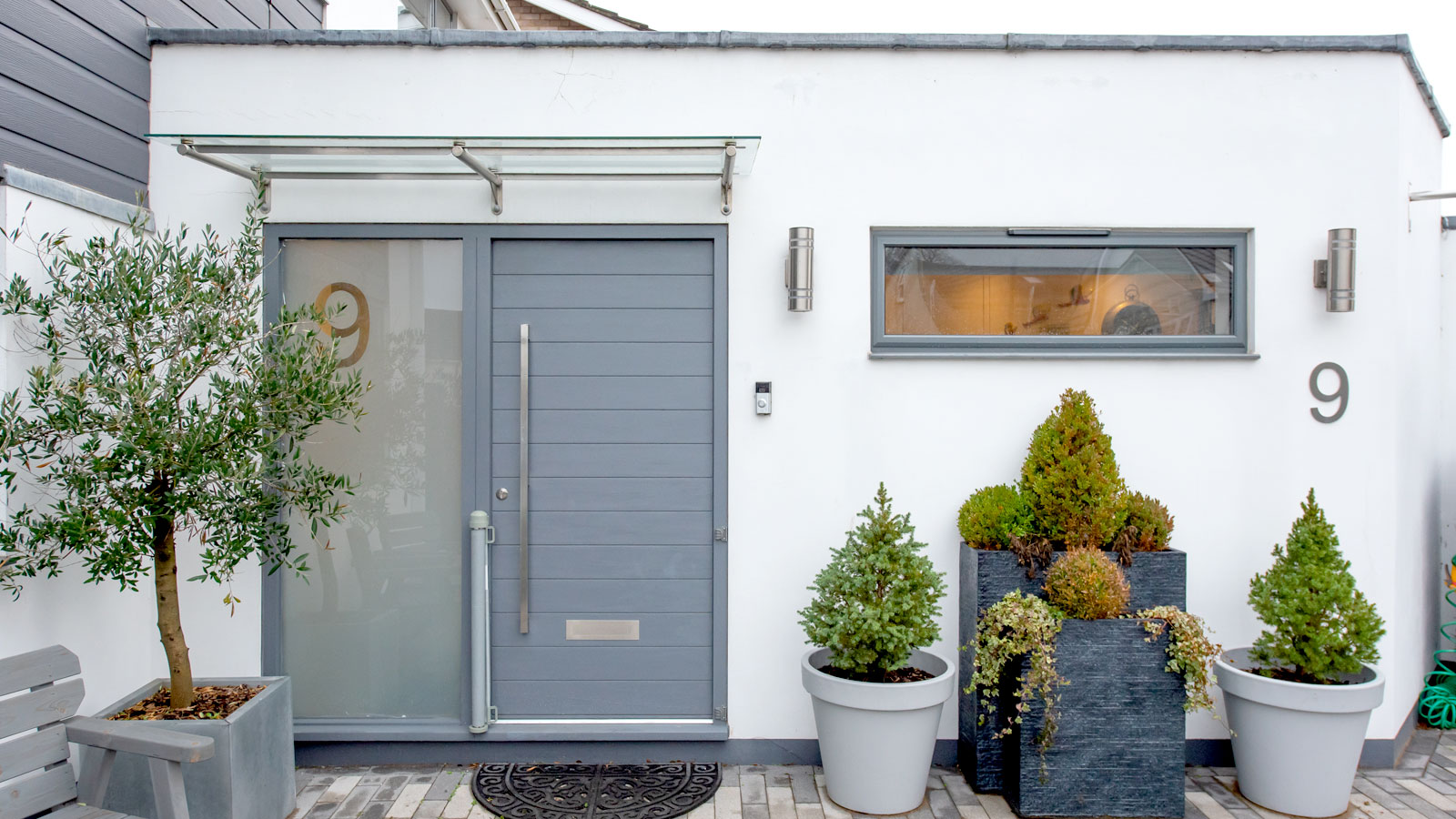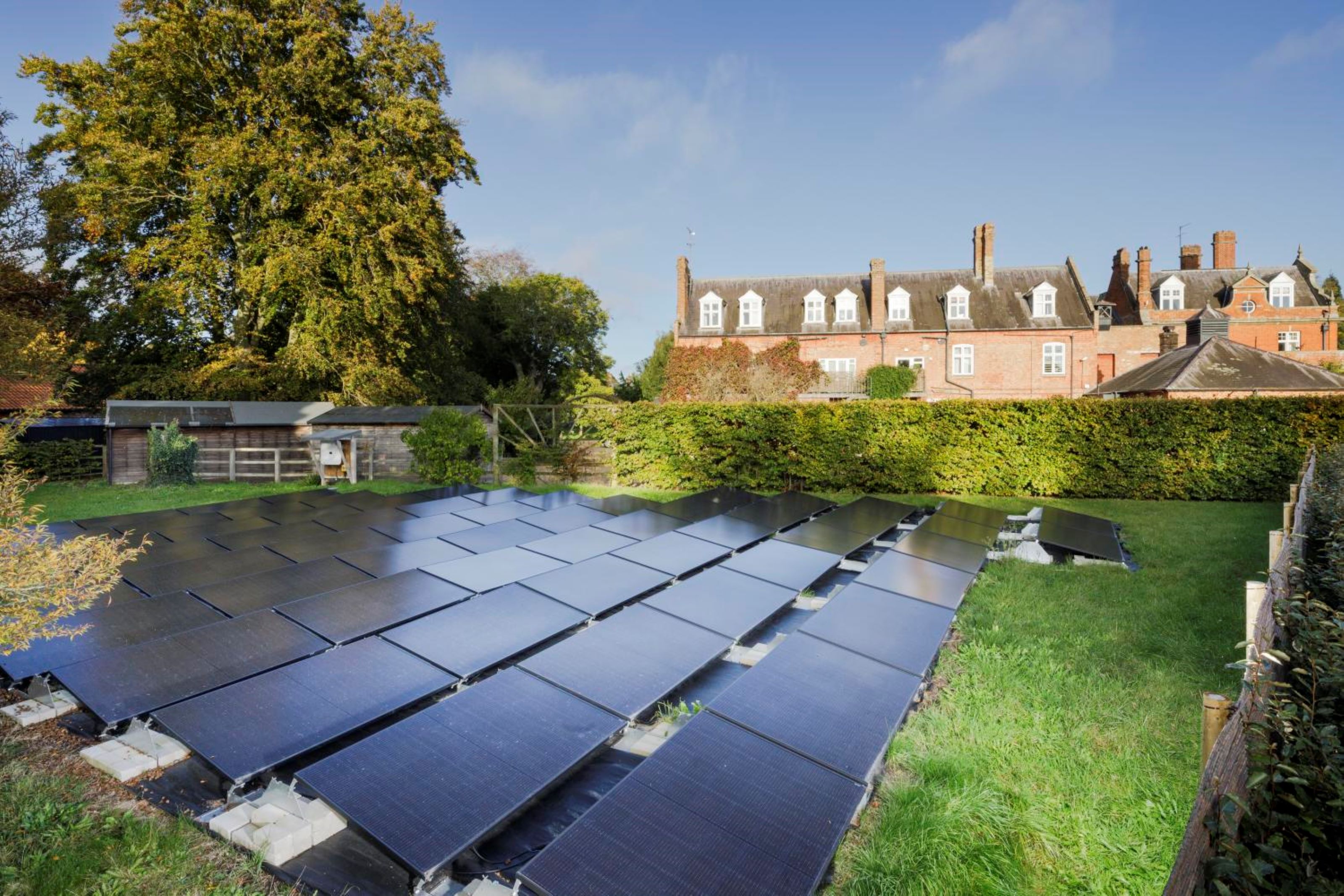Can you paint a composite door? Our expert explains how to freshen up this door type
If you are wondering whether painting a composite door is possible, you’ve come to the right place. We guide you through the tips and techniques to get a flawless finish

Composite doors are typically exterior doors and come in a variety of colours, so don’t need to be painted. But, if you're looking to refresh your doors with a contemporary new hue, it is possible to repaint a composite door.
Painting a composite door is similar to painting wooden doors, but with some subtle differences. For starters it's not a good idea to use wood paint on a composite door. It simply won't work as well.
Here we reveal what you need to know to give your composite door a makeover.
Can you paint a composite door?
The simple answer is yes, but you need to ask yourself if you should. Composite doors are not designed to be painted, they are manufactured with the colour ingrained in the fabric of the door. But their make up means that they can be painted, if you really want to switch it up.
Maybe you've moved into a new home and want to give it a makeover, or you're simply fed up with the current colour and want a change. Do it right and you’ll have a good looking door for years to come. But, it won’t be as durable as the original door finish, so expect to repaint every 3-5 years.
How composite doors are made
Composite doors commonly consist of three major parts; a wooden sub frame, an outer GRP skin and a rigid insulating foam core. This makes them stronger, more durable than UPVC and solid wooden doors and more energy efficient. The Glass Reinforced Polymer (aka Glass Reinforced Plastic) skin is hard wearing and often comes with a wood grain effect to simulate a natural door. And, there’s a wide choice of colours available.
The insulation is commonly high density which improves its thermal capabilities – less heat escaping through the door – and it improves its overall strength.
Prepping composite doors for painting
The first step is to make sure that it is clean before any paint gets anywhere near the door. A poorly prepped composite door will mean that any paint won’t adhere as well to the surface, meaning it won't last as long and it will be more susceptible to scratches and knicks.
Begin by brushing down with a stiff brush to get rid of any dirt and debris. If the door is really dirty wash down with washing up liquid and warm water. When dry, wash down the door with sugar soap to get rid of any ingrained grime and grease to give a clean surface to work with it.
Now, get a fine grit sandpaper grade – 220-240 grit is a good choice – and rub down the door to improve adhesion. This is not critical, but it does help the paint adhere to the GRP surface. Finally, wipe down the door with a damp cloth – to get rid of dust – and vacuum up any other dust, dirt and debris. If you have windows use a painters tape like this FrogTape Multi-Surface Pro Painter's Tape from Amazon to keep paint off the glass.
Finally remove any hardware – handles, letterbox etc – if you can. If not mask off the hardware with painter’s tape.
Best paint for composite doors
To get a strong durable finish a suitable primer is always a good starting point. Some paints are self priming, but the addition of a good-quality primer will help improve adhesion and is a smart option if you are painting a dark composite door a lighter colour.
An oil-based primer like this Zinsser B.I.N primer and sealer from Amazon is a good choice often used by professionals.
For a top coat and finish, you want to be using a paint suitable for the job. Zinsser AllCoat from Amazon is a durable and hard wearing exterior paint. I’ve used it on exterior doors and it covers well and lasts.
Another good choice is Frenchic’s AlFresco range which is good for interior and exterior doors and is easy to apply. Again it's another paint I’ve tried and it still looks good after years and retains its colour well.
Painting a composite door
There are several options dependent on what type of finish the composite door has. Typically, you will need a brush and roller, but there is also the option to use a spray paint gun. Brush and roller are more convenient and cheaper, while a spray gun will give a smooth factory-like finish, but needs more prep and a decent spray gun is expensive.
If a door has any windows or elements that a roller won't cover, use a paintbrush to paint around the edges or into any grooves. Then start at the top and work your way down, split the door into sections, so the top half first, then do the bottom half.
If you have large flat sections on the door use a mini roller like this Harris Essentials Mini Roller Set from Amazon. Use the foam roller for a smoother finish and the emulsion roller for doors with wood grain effect finish.
FAQs
How long will paint on a composite door last?
A composite door typically has a lifespan of around 20-30 years, but this depends on how exposed it is to outside forces such as the weather – rain, ice, sun. If well maintained a good-quality exterior door can last longer.
However, a paint job will not last as long as this. Typically, you can expect to repaint every three to five years. But once again the lifespan of a paint job will depend on exposure to weather, how well the door was prepped, the chosen paint, and if applied properly in good conditions. Do it right, the longer it will last.
If you’re giving your interior and exterior doors a new coat of paint you need to ask yourself how much paint do I need?
Plus get some useful tips with our guides on how to paint a panel door and how you approach painting a door frame.
Get the Homebuilding & Renovating Newsletter
Bring your dream home to life with expert advice, how to guides and design inspiration. Sign up for our newsletter and get two free tickets to a Homebuilding & Renovating Show near you.
Steve Jenkins is a freelance content creator with over two decades of experience working in digital and print and was previously the DIY content editor for Homebuilding & Renovating.
He is a keen DIYer with over 20 years of experience in transforming and renovating the many homes he has lived in. He specialises in painting and decorating, but has a wide range of skills gleaned from working in the building trade for around 10 years and spending time at night school learning how to plaster and plumb.
He has fitted kitchens, tiled bathrooms and kitchens, laid many floors, built partition walls, plastered walls, plumbed in bathrooms, worked on loft conversions and much more. And when he's not sure how to tackle a DIY project he has a wide network of friends – including plumbers, gas engineers, tilers, carpenters, painters and decorators, electricians and builders – in the trade to call upon.

